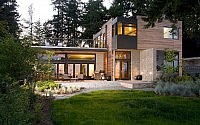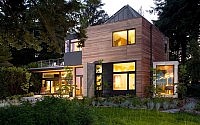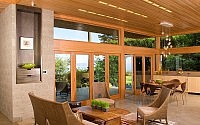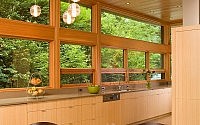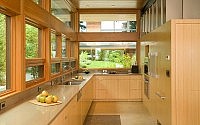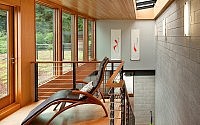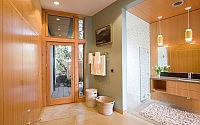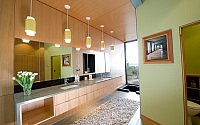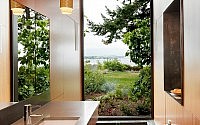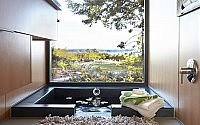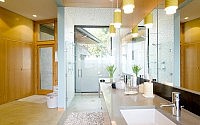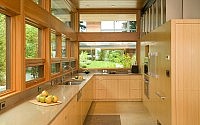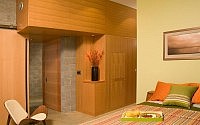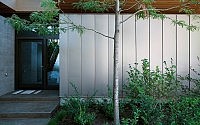Ellis Residence by Coates Design Architects Seattle
Located on Bainbridge Island, WA, this modern passive single family house was designed by Coates Design Architects Seattle.
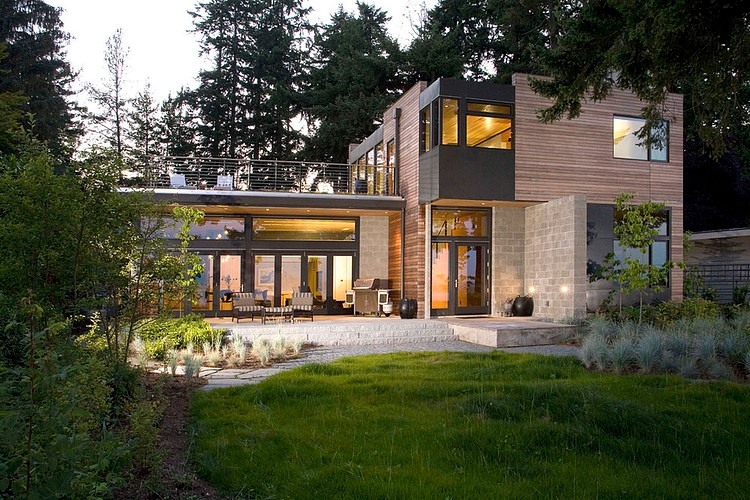
















Description by Coates Design Architects Seattle
Designed to Make a Difference
The entire house is oriented to capture sun and shade and designed to passively heat and cool itself. The home also has a wide range of features to increase energy productivity including geothermal heat, photovoltaic energy collection, solar hot water, thermal massing and heat-recovery technologies. Additional key features include: two 1,500-gallon rainwater collection cisterns, radiant floor heating, site-milled wood trim, triple-glazed windows and a vegetated roof.
A large east-west “spine” forms a central thermal mass core for the house. This massive wall reduces temperature swings and is oriented in conjunction with operable skylights to take advantage of cooling techniques. In addition, this wall sets up a division between private and public spaces. To the north, the private portion of the house is much more enclosed. To the south, the glassy public spaces have abundant natural light and views. To the east, the water side of the house, windows and doors open to allow the naturally cool breezes from the Sound to temper the interior spaces.
Coates also created spaces with multiple functions in order to achieve a smaller overall footprint. For example, the washer and dryer and clothing storage are built into the master bathroom casework and there’s an office tucked into a corner of the media room. The home’s roof became a vegetated garden patio providing a place to relax – and greater insulation. There are also sliding and bi-folding doors that transform smaller rooms into larger gathering spaces that can be easily connected to the outdoors. “Every room in the house serves at least two functions, and usually four or five,” said Coates.
Coates’ commitment to going green paid off: the 2,500 sf home uses 70% less energy than a typical comparably-sized home.
LEEDing the Way
The Ellis’ home shows that sustainability and a love of modern design aren’t mutually exclusive. “We wanted to prove that modern, gracious residential design could encompass local environmental concerns and state- of-the-art energy efficiency,” said Joanne Ellis. “Matthew and his team far exceeded our goals.”
The home serves as a model and educational tool for future sustainable residential projects. During construction and after they moved in, the Ellis’ hosted open houses to inspire others to embrace sustainability. Coates is a sought-after speaker and lecturer and the Ellis’ often join him to relate their experiences to a wider audience. “It became obvious early on that Joanne and Ed wanted to do more than just build green,” Coates recalled. “They are active role models for sustainable living.”
The Ellis’ are proud that their home raises the bar for environmental commitment in design and construction, but more importantly they hope it will inspire others to embrace sustainability in their own homes – and lives.
Visit Coates Design Architects Seattle
- by Matt Watts